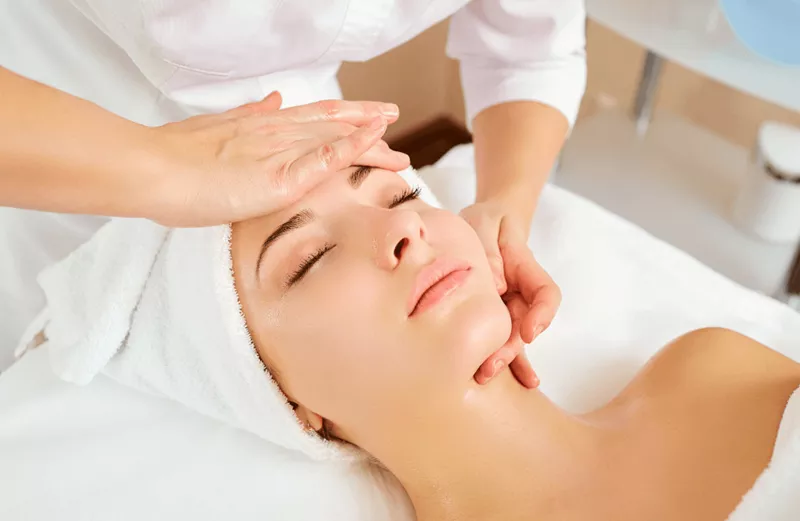Cut marks often leave behind more than just memories
Whether from accidents, surgeries, or minor injuries, cuts on the skin can sometimes heal with lasting marks that become a visible part of your appearance. For many people, these spots or scars can be more than cosmetic nuisances—they may also serve as daily reminders of pain, trauma, or insecurity. While the skin has a remarkable ability to heal itself, the resulting pigmentation or uneven texture doesn’t always fade as one might hope. This has led to a growing interest in spot removal creams designed to minimize or eliminate the signs of old cuts.
Spot removal creams have advanced significantly in recent years, evolving beyond simple bleaching agents to include ingredients that support collagen production, skin regeneration, and deep hydration. The goal is not only to lighten the mark but also to improve the texture and resilience of the skin. These formulations work by targeting the excess melanin, inflammation, and scar tissue that contribute to the visible signs of a healed cut. In this article, we will explore six of the best spot removal creams that have earned a strong reputation for their effectiveness in helping skin recover both in tone and texture.
Mederma Advanced Scar Gel supports collagen remodeling
Mederma Advanced Scar Gel is one of the most recognized scar treatment products globally, largely due to its proven results and dermatologist-recommended status. Its key active ingredient is allantoin, a compound known for its skin-soothing and cell-regenerating properties. Unlike some other scar creams that only lighten pigmentation, Mederma works on multiple levels to improve the appearance of the skin’s surface and support deeper healing. With regular use, it can soften raised scars and make discolored spots much less visible.
This gel is ideal for a wide variety of scars, including those caused by cuts, surgery, burns, and even acne. It’s lightweight, non-greasy, and designed to be applied just once a day, which makes it a convenient option for people with busy lifestyles. The product begins showing visible changes in about four to eight weeks, depending on how old the scar is. For newer marks, results may come faster, while older scars may require a longer period of consistent use. Its safety profile and ease of application make it a favorite among those seeking to treat cut spots without invasive procedures.
Bio-Oil Skincare Oil improves texture and tone
Bio-Oil is another well-known name in scar treatment, particularly celebrated for its ability to address uneven skin tone and post-injury discoloration. This oil-based formula contains a blend of plant extracts and vitamins suspended in an oil base that allows for deep skin penetration. Its star ingredient, PurCellin Oil, ensures the product spreads easily and absorbs quickly without leaving behind a sticky residue. Vitamins A and E work alongside calendula, chamomile, lavender, and rosemary oils to nourish and repair damaged skin layers.
What makes Bio-Oil especially effective for cut marks is its ability to hydrate deeply, which plays a crucial role in the skin’s natural repair process. Dry skin tends to scar more visibly and takes longer to heal. By keeping the skin supple and moisturized, Bio-Oil helps accelerate healing while also minimizing pigment buildup. The product is suitable for all skin types and can be used twice a day. While results aren’t instant, consistent use over several months can lead to visible reduction in both the texture and darkness of scarred areas. It also has the added benefit of making skin feel softer and more elastic overall.
ScarAway Silicone Scar Gel uses medical-grade technology
ScarAway Silicone Scar Gel employs a type of treatment that has long been favored in clinical environments—silicone therapy. Silicone helps create a protective barrier over the skin that retains moisture, reduces redness, and flattens raised scar tissue. It mimics the skin’s natural barrier function, which encourages the healing environment needed to soften and fade scars gradually. ScarAway’s gel is a transparent, fast-drying formula that works well under makeup and sunscreen, making it easy to incorporate into a daily routine.
Unlike heavy creams or oils, this silicone-based product doesn’t clog pores or feel greasy. It’s particularly helpful for people with sensitive skin who may not tolerate more aggressive active ingredients. The gel is applied in a thin layer over the scar area twice a day, and with time, it helps reduce the visibility of both old and new scars. For cut marks that are raised or pinkish in color, silicone has been shown to be especially beneficial. Regular application over 60 to 90 days is typically recommended for noticeable improvement. ScarAway combines the reliability of medical research with everyday ease of use, making it a top choice for long-term scar management.
Contractubex Scar Gel offers a multipronged approach
Originating from Germany, Contractubex Scar Gel is a lesser-known but highly effective product that combines several active ingredients to target scars from multiple angles. Its formulation includes onion extract (a natural anti-inflammatory), heparin (which softens tissue), and allantoin (which promotes cell regeneration). This combination addresses both discoloration and scar texture, making it suitable for treating post-cut spots that are raised, firm, or dark.
Contractubex works by inhibiting the overproduction of scar tissue while promoting smoother skin renewal. It’s often used after surgical procedures but is equally effective on everyday cut marks. The gel has a slightly medicinal smell and needs to be massaged thoroughly into the scar area two to three times a day. Although it may take longer to show visible results compared to some other products, users frequently report noticeable improvements in both color and smoothness after 8 to 12 weeks of consistent application. Its therapeutic action beneath the surface of the skin makes it a powerful option for those looking to fully restore the affected area.
Cicatricure Scar Gel enhances skin clarity naturally
Cicatricure Scar Gel is formulated with a blend of botanical extracts and vitamins aimed at improving skin clarity and reducing the appearance of scars over time. It’s particularly helpful for people looking to fade dark spots left by cuts, as it promotes even skin tone while also helping to smooth rough patches. The gel texture absorbs quickly and is non-sticky, which makes it pleasant to use on a regular basis. While the exact ingredient list varies slightly depending on the region, most formulations include extracts like onion, chamomile, and arnica—known for their anti-inflammatory and regenerative effects.
Used two to four times daily, Cicatricure is best suited for newer scars but can also produce gradual improvements in older ones. It works by moisturizing the skin, reducing inflammation, and encouraging collagen synthesis. While its results may not be as dramatic as prescription options, it stands out as a gentle and affordable solution that’s widely accessible. With continued use, the affected skin area becomes brighter and smoother, helping individuals regain confidence without turning to costly cosmetic procedures or harsh chemicals.
Derma E Scar Gel promotes healing with natural botanicals
Derma E Scar Gel is another natural option that has earned praise for its clean ingredient profile and consistent results. This gel relies on a mixture of botanical ingredients, including panthenol (pro-vitamin B5), allantoin, and onion extract. These elements work together to hydrate, soften, and renew the skin. Unlike other creams that focus primarily on fading dark pigmentation, Derma E also prioritizes skin health and comfort, making it ideal for sensitive skin types or people recovering from minor cuts and abrasions.
What sets this gel apart is its commitment to clean beauty standards. It is cruelty-free, free from parabens, and made without synthetic fragrances. When applied twice daily to clean, dry skin, users can expect gradual lightening of scars and a smoother surface within a few weeks. For people who prioritize both performance and purity in skincare, Derma E provides a safe, effective route to restoring skin after a cut. Its gentle but effective action supports healing from both the surface and beneath the skin layers.
Choosing the right cream depends on your skin and scar type
While each of these spot removal creams has its strengths, selecting the best one depends largely on the nature of your scar and your skin’s unique characteristics. Some creams are better for fresh, flat scars, while others work well on older, raised marks. If your scar is red and inflamed, products with anti-inflammatory ingredients like onion extract or silicone may offer quicker relief. For hyperpigmented or dark spots, vitamin-rich oils and botanicals may produce better results over time.
It’s also important to maintain realistic expectations. No cream can make a scar vanish overnight. Healing is a slow and steady process, and visible improvement usually takes several weeks or months of consistent application. Many people find that rotating between two compatible products—for example, using a hydrating oil during the day and a scar gel at night—can maximize results without overwhelming the skin. Always test a small area first to ensure compatibility and avoid irritation.
Consistency, sun protection, and patience are essential
Whatever cream you choose, the key to success is consistent application and proper skin care practices. Scarred or damaged skin is especially vulnerable to sun damage, which can worsen discoloration and delay healing. Applying a broad-spectrum sunscreen of SPF 30 or higher every morning is essential if you’re treating any kind of spot or scar. It helps prevent darkening of the area and supports the fading process. Without sun protection, even the best creams may fail to produce noticeable results.
In addition to using creams, keeping the area clean, moisturized, and protected from further trauma will significantly boost your chances of recovery. Avoid picking or scratching the spot, and don’t expect miracles in a week. Many of these treatments require at least 8 to 12 weeks of daily application before results become prominent. By staying patient and committed to your routine, you can expect your skin to gradually become clearer, smoother, and more even-toned—without the need for invasive procedures or harsh treatments.
Related Topics



































